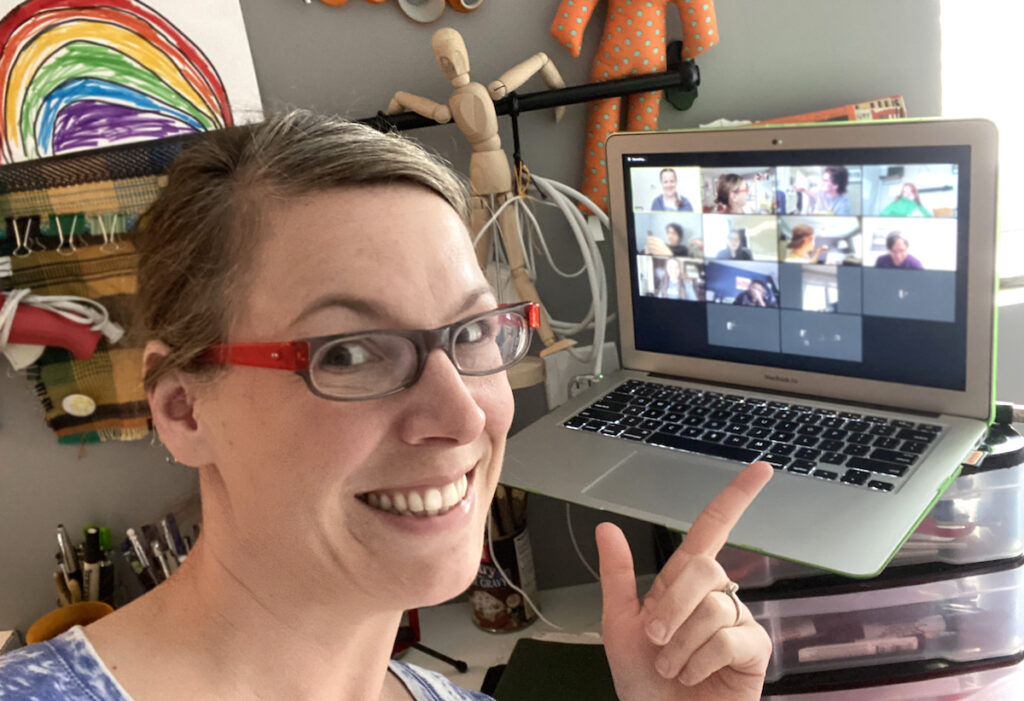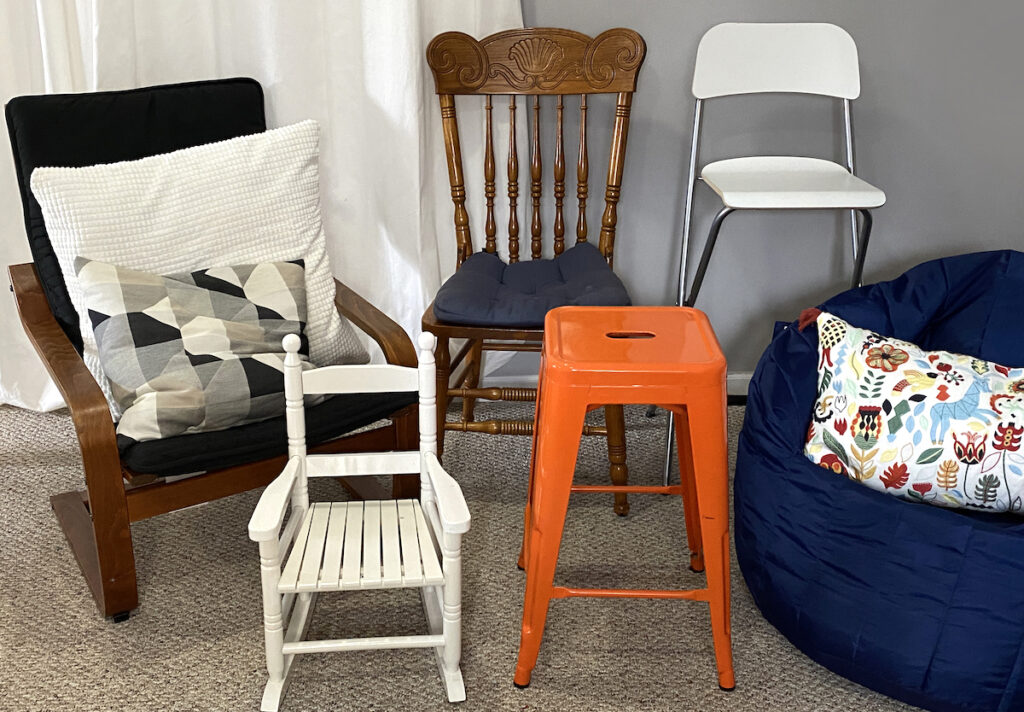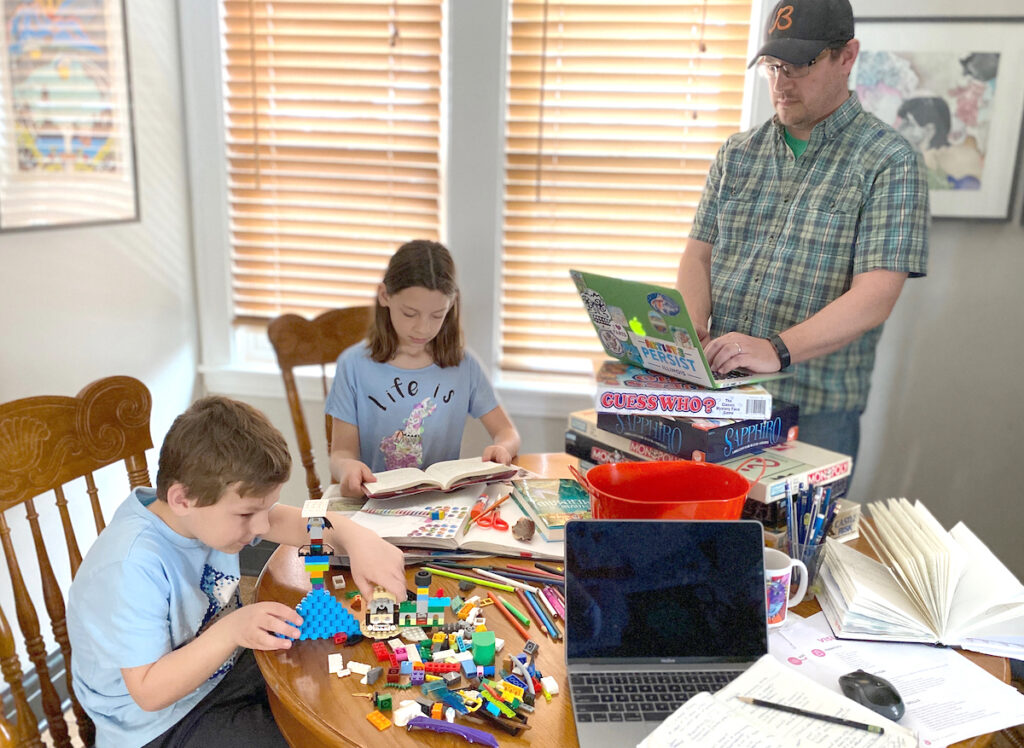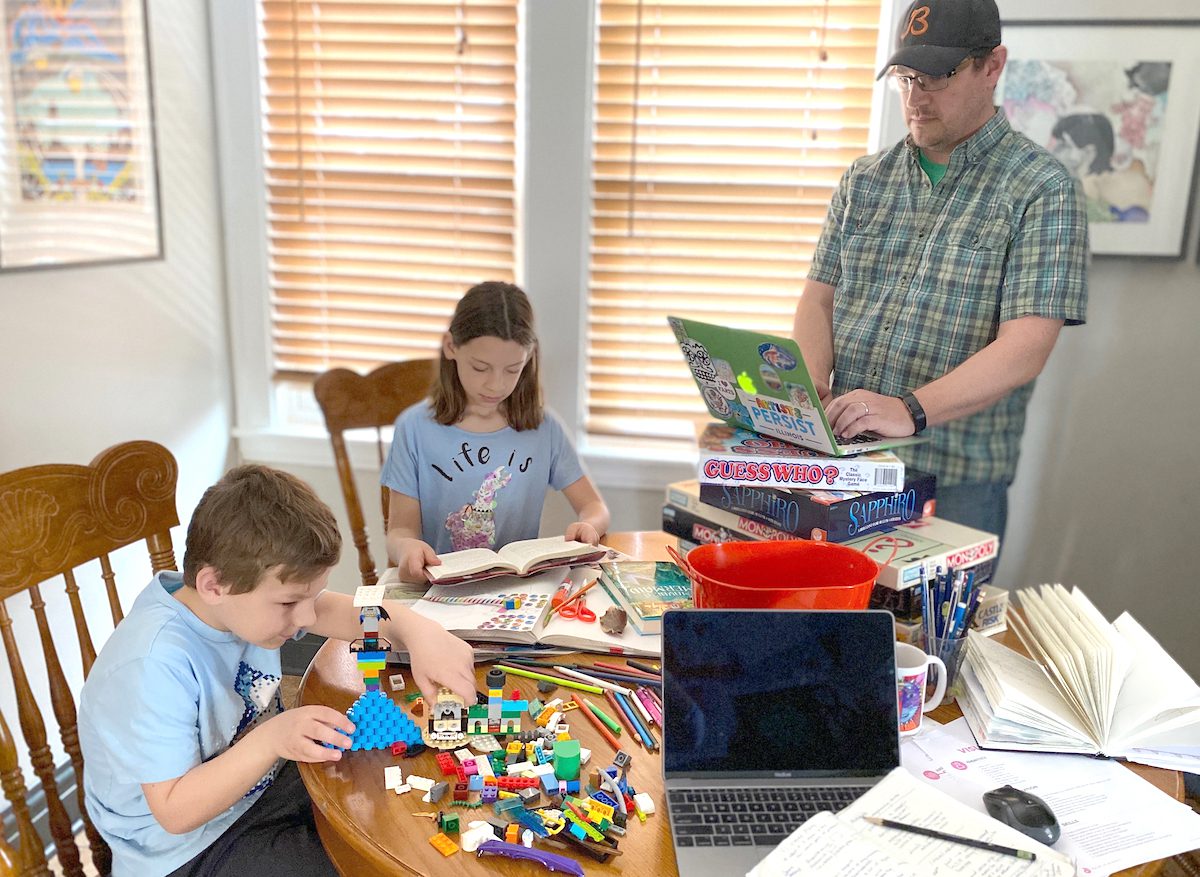Art Education and the Coronavirus (COVID-19)
What an interesting few (or for some of us, several) weeks it has been in our world of teaching. Everything keeps changing from moment to moment, and I feel I’ve lived a month in the span of a week.
Here are a few takeaways (in no particular order) from a personal look into the first week of teaching remotely.

1. Students are super creative.
On my very first day of eLearning, I asked my students to post a video answering a few questions. How are you doing? How do you feel about eLearning? What are you doing with your time in isolation? How much junk food have you eaten, which video games are you playing, and what about your Netflix binge-watching? We’ve had a digital art student make a video demonstrating a Chinese yo-yo trick, a photo student showed us the macaron earrings she made while an AP kid took us on a tour of her “messy” studio.
Family time has definitely been a bonus for some: one student walked us through the cardboard dollhouse she’s been working on with her little sister, another has been building a rock wall with his siblings in their backyard. It is amazing to see that our students are inherently creative when they have the time to exercise their own creativity.
2. Students are feeling all the feels.
Our students are feeling a range of emotions regarding what’s going on, and it is apparent when we ask them. While some students are already fed up with their families, others are worried about them. Some students are watching a lot of TV and honing their gaming skills, others have to work, babysit siblings, or pick up food from pantries to feed their families. Seniors are grieving the loss of canceled events they have been anticipating for a very long time, while others are ecstatic to be holed up in their rooms away from all civilization. Students have submerged themselves into hours of creative artmaking because they want to or because they have nothing else to do. Either way, art will serve as an incredibly therapeutic activity in these times of uncertainty.

3. Sitting in a chair all day is exhausting.
Let’s be honest, we complain about being on our feet all day, and now we’re sitting on our rear-ends. It’s definitely time to McGuyver a standing desk and set timers to take movement breaks. Silver lining: we can now drink those seventy-four ounces of water and have the luxury to use the restroom. Whenever. We. Want.
4. Boundaries are essential.
Have you found yourself tethered to your computer? I am working extra overtime right now trying to set up eLearning opportunities, and checking in with students, and keeping up with all the changes. It’s time to set some office hours and apply those to your email signature as well. Setting limits is healthy for us and it’s healthy to model for our students. Don’t forget to schedule in time for your lunch and maybe even some yoga.
Support your own professional development while eLearning with PRO Learning.
5. Learning is happening, authentically.
On St. Patrick’s Day, many neighborhoods near me had a scavenger hunt for homemade shamrocks. People got outside for a walk and some fresh air. A friend of mine said she had her kid make tally marks for every house found. They grouped the tally marks and made it into a multiplication activity. Would she have done that anyway? Maybe, but I’m starting to see a lot of ways in which learning is integrated instead of isolated by subject. Sure, maybe students aren’t learning calculus in their everyday situations, but they are spending time learning new skills like cooking the perfect over-easy egg or sewing the holes in their socks and connecting with their families.

Photo courtesy of Janell Matas
6. eLearning takes way more time than regular learning.
My fear happened. When we teach our students in the classroom, we can demo in a few minutes and we can walk around giving instantaneous feedback with a few words. Now, I am looking through each individual students’ daily work, videos, discussions to see how they are learning. I really want to connect with my students, for them and for me. Balancing the feedback to quick tidbits or juggling daily challenges with two to three daily checkpoints helps students prioritize their time and gives you a breather.
7. It is hard to tell the difference between enrichment and eLearning.
This is the elephant in the room. I’ve been told to teach via eLearning, but at the same time, I was told it was not mandated learning. I was told I have to take attendance every day, and then simultaneously told that attendance cannot be held “against” our students. I was told to post daily lessons, and then also told none of it could be graded nor would it have to be made up by students when or if we return to school. What a confusing time! I do not envy being any type of administrator in this situation.
In the meantime, here is my advice: Focus on creativity. What normally takes half an hour will take your students one hour or more including the time to upload a photo to Google Classroom. Don’t forget, students are eLearning at a computer for six other classes, and in all reality, some or many of your students may not even have access to the lessons you’re electronically providing. Keep it simple. Personally connecting with your class is the most important aspect right now, the rest will follow.
Need more information? Learn more here!

8. It is nearly impossible to teach (or even be with) your own kids at the same time.
I have always envied corporate types who could work from home in their pajamas and do their laundry while mine piles up over the weeks. There are some serious pros and cons to working from home and right now it is tight quarters for all. I very much recognize my privilege as I continue to work, continue to be paid, and not worry about childcare. I can only imagine the extreme impact this has on families. In this situation, though, what are some ways to combat this crunch? Currently, my own children are attempting the same assignments or prompts I’m giving my students. After the first full week of eLearning, I recognized I needed to set up a space to keep the photobombing during video calls to a minimum.
9. Art teachers love to share.
What a community we have built! It has been an incredible experience to watch art teachers sharing all of their hard work with each other. There are now online teaching communities set up, and AOEU is working hard to provide as much relevant and timely content around the clock to support us. The Grundlers (#k12artchat) have tossed out many resources and the Youtube teachers out there are our heroes. Remember to do your best to credit each other when possible as well as share generously.
10. We are also overachievers.
Make sure to take care of yourself. Every art teacher I know and have seen is going above and beyond to connect with our students and provide relevant content for their students. Slow down. Yes, this is definitely advice I need to tell myself as well. We are good enough and perfection is certainly not necessary (nor is it ever achievable).
Transitioning into eLearning is hard. With very little time, we’ve had to turn our classrooms upside-down and inside-out. Some of us were given a moment’s notice, our students may have no access to technology, and we are scrambling to fit our curriculum into a minimal supplies list. While my brain is exhausted from engaging with a computer screen, how incredible is it to live in an age when we can still connect while in isolation? Practicing gratitude and mindfulness will help remind us of our priorities and calm our nervous systems. None of us may know what day it is, when we last showered, or how many episodes of Stranger Things we’ve watched in one day. Life will continue and learning will happen. Take this time to slow down and remember to connect and create.
What are some ways you are connecting with your students while teaching remotely?
What systems have you put into place to help you balance your quarantined work life?
If your school hasn’t closed (yet), what are your biggest worries with teaching remotely?
Magazine articles and podcasts are opinions of professional education contributors and do not necessarily represent the position of the Art of Education University (AOEU) or its academic offerings. Contributors use terms in the way they are most often talked about in the scope of their educational experiences.






